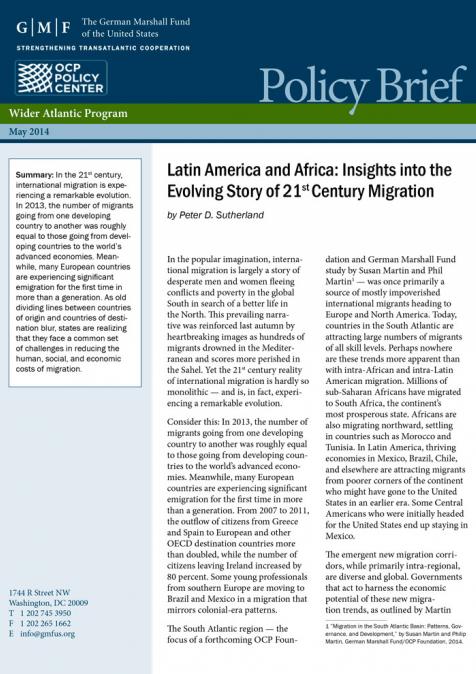Paul-Simon Handy, Regional Director for East Africa and Representative to the African Union, delves into the complexities of mediation in internal African conflicts. Despite half of the UN peacekeeping forces being deployed on the African continent, sustainable peace remains elusive. Mr Handy explores the reasons behind these challenges, shedding light on the intricate dynamics and obstacles that hinder effective conflict resolution.
RELATED CONTENT
-
AuthorsDaniel YeoGlobal Green Growth Institute EthiopiaJune 12, 2014Since the German government’s Nexus conference in Bonn in 2012, interest in holistic approaches to water, food and energy has exploded under the catchy label of ‘The Nexus’. The core tenet of the ‘Nexus’ approach is that water, energy and food are intrinsically linked at both the bio-physical level and the policy-making level – that decisions and actions on water, food and energy are linked and affect each other. This may be true, but it is not unique to the relationship between wat ...
-
June 12, 2014Interview with Guy Jobbins - International Conference on The Water-Food-Energy Nexus in Drylands: Bridging Science and Policy 11-13 June 2014, Rabat, Morocco ...
-
May 30, 2014Investing in Youth Leadership: A Roadmap for Action ...
-
May 26, 2014GMF - OCP Policy Center Joint Seminar Serier The Fractured Ocean: Current Challenges to Maritime Policy in the Wider Atlantic ...
-
May 12, 2014Conference on Mega-Regional Trading Arrangements, the WTO, and Responses of Excluded Countries ...
-
AuthorsMay 2, 2014The financial and economic crisis that unfolded across the globe after the 2008 sub-prime meltdown was not just another cyclical bump in the conquering advance of modern capitalism. It was — and still is — a symptom of the exhausted 20th-century way of envisioning the best path to economic growth, consumer satisfaction, and efficient production of goods. Environmental limits to our race to prosperity are just part of the story. The other, and crucial, part is the ongoing technologic ...
-
AuthorsAicha BelarbiMay 2, 2014It is important to understand how today’s migrations are shaping the architecture of Africa and South America, creating intensive South-South and South-North movement, but a weak flow between the two continents. Political, socioeconomic, and environmental differences between Africa and South America could lead to imbalanced migratory processes between the two continents. Migration policy is not a purely rational enterprise; it is usually designed to please public opinion, and remain ...
-
AuthorsPhilip MartinSusan MartinMay 1, 2014This report examines migration patterns in and between the two continents of the South Atlantic Basin — Africa and South America. It assesses migration governance and the migration provisions of regional economic integration agreements and explores the potential of migration and diasporas to accelerate economic development in the South Atlantic. ...
-
AuthorsPeter D. SutherlandMay 1, 2014In the 21st century, international migration is experiencing a remarkable evolution. In 2013, the number of migrants going from one developing country to another was roughly equal to those going from developing countries to the world’s advanced economies. Meanwhile, many European countries are experiencing significant emigration for the first time in more than a generation. As old dividing lines between countries of origin and countries of destination blur, states are realizing that ...
-
April 29, 2014GMF - OCP Policy Center Joint Seminar Series Recent Developments in Turkey: Internal and External Implications ...







